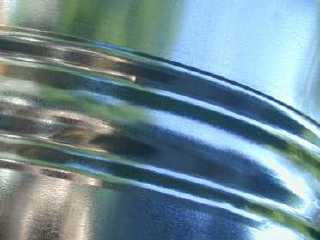The address of the Behrens company is 471 W 3rd St., Winona, MN 55987; telephone 507-454-4664. Their customer service e-mail address is behrenscs@chartermi.net. They should be able to tell you where to get their tubs in your neck of the woods.
The Home Depot item number for the #3 tub is #807104; for the #2, it is #946844. On the web, their site is www.homedepot.com; follow the links to their online store>cleaning supplies>cleaning tools>tubs.
The Tub-O-Tone you can make with a galvanized sheet tub is significantly superior to the one made with a hot-dipped tub, and I strongly recommend that you NOT use a hot-dipped tub. If you can't track down one of the Behrens tubs described above, you still want to get one made of galvanized sheet- not a sturdier hot-dipped model. I've had reports of good luck with Dover and with Brinkman gs tubs; I have not had success with the 24-5/8" #3 tub available from Wal-Mart in the Kansas City area. Galvanized-sheet tubs are lighter in weight, and look shinier and smoother; hot-dipped ones usually look rougher and more rugged, and often have some blobs or runs of zinc as well. Check the joint between tub sides and bottom-- galvanized-sheet tubs are commonly sealed with a line of silicone caulk at that point. At a farm store, the salespeople can probably tell you which tub is which.
 |  |
| Hot Dipped | Galvanized Sheet |
The reasons you might prefer a Two over a Three are:
- the #2 tub is stocked by practically every Home Depot around the country, while the #3 is carried only by some of them;
- a Tub-O-Tone based on the #2 tub doesn't have the range of overtones or the carrying power than a #3-based model does, but this is not necessarily a bad thing;
- for playing in-doors and/or in especially "live" or resonant surroundings, the #2 is often preferable because it is not as loud;
- because it is a more well-behaved instrument, the #2 is more suitable for playing with smaller, gentler groups;
- because of its more controlled sound, the #2 is more manageable in a recording situation, or wherever your bass will be miked.
For the plans to work without extensive modification, however, the pattern in the tub's bottom (as viewed with the tub turned upside-down) must consist of concentric corrugations with 1" between each ridge and the next, and the outermost ridge 17" in diameter (to use the Three neck), or 15" (to use the Two neck.) The inner disk should be approximately 2-1/2" in diameter.
If you're undertaking to make a washtub bass out of a stock tank (or a 26-gallon monster tub like Washtub Jerry uses), I'll leave it to you to make the appropriate adjustments in dimensions and materials. In particular, you'll need a board wider than a 1x6, for the ring pieces.
(Since most tubs are squashed a bit, determine the approximate design diameter by first finding the greatest distance across the tub mouth. Then measure across at right angles to that diameter. Add the two measurements and divide by two.)